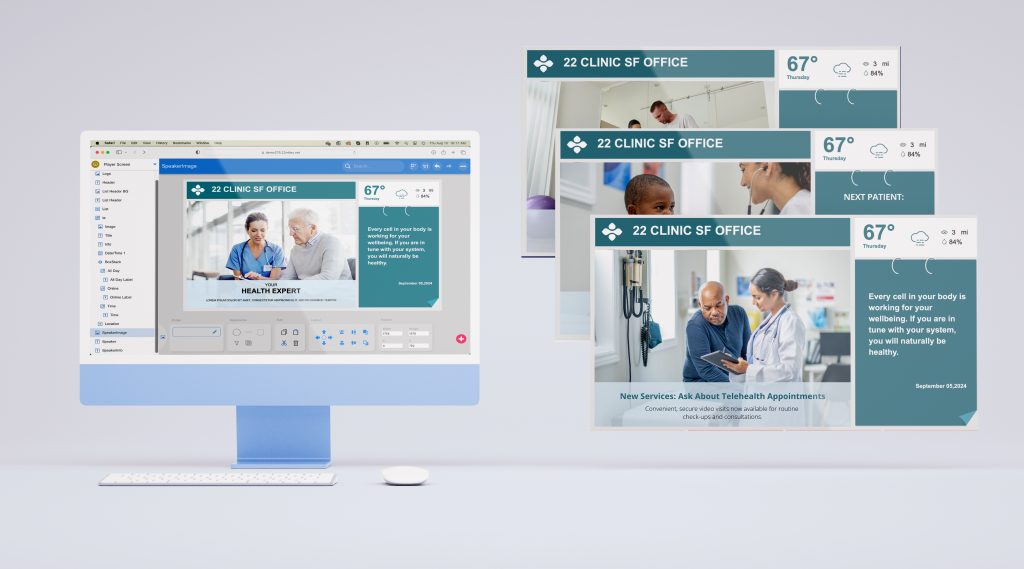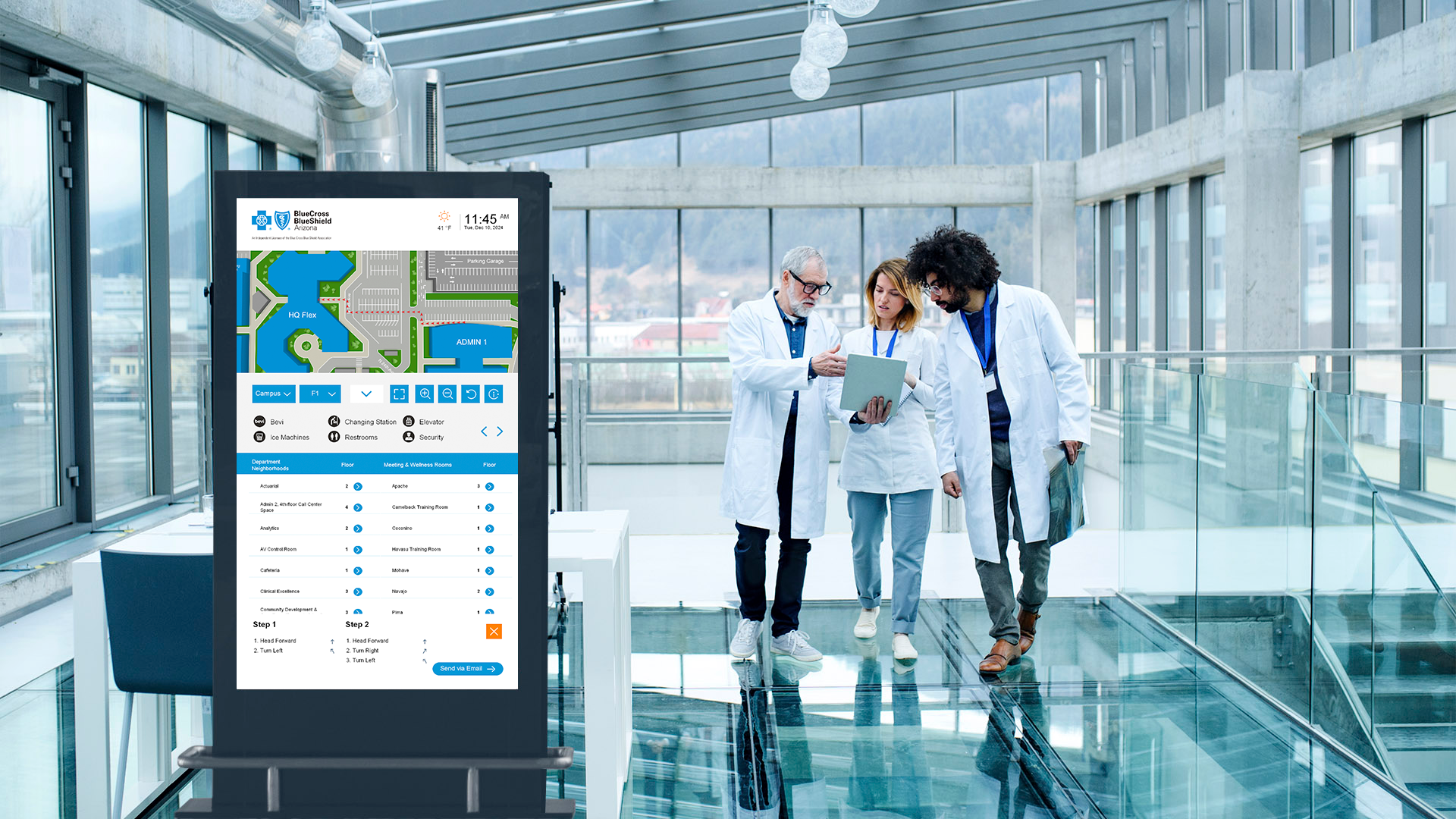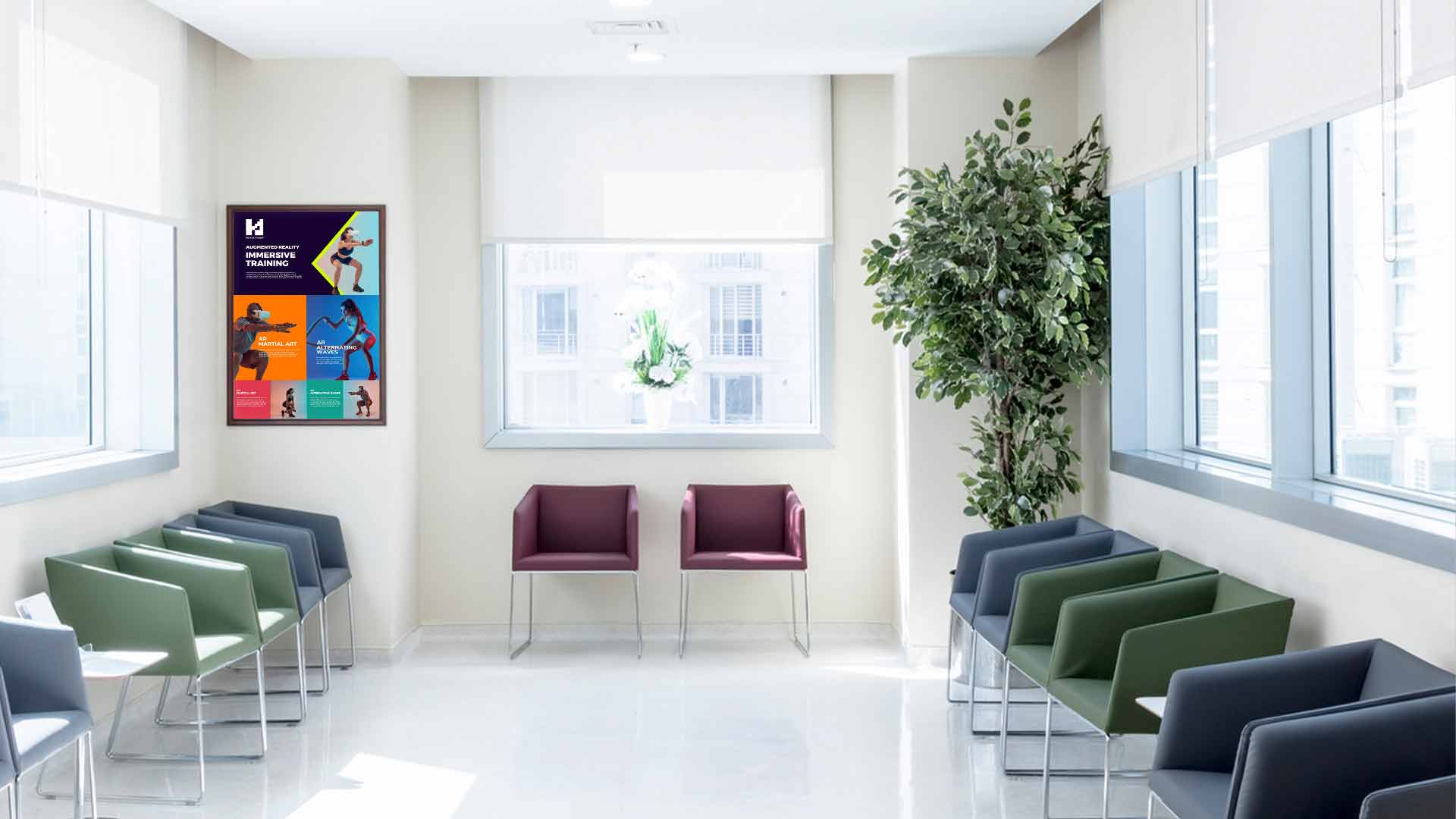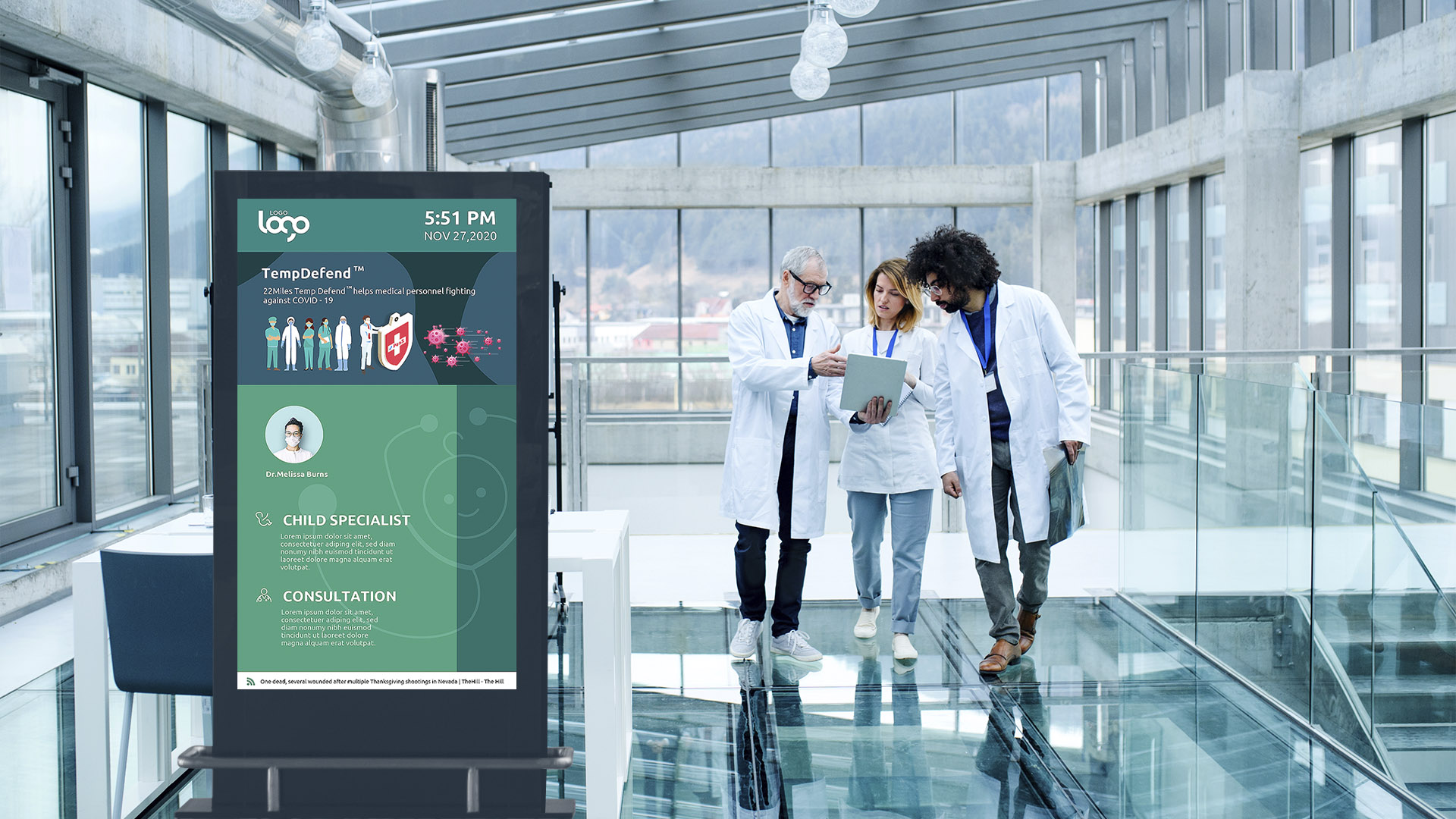November 26, 2024
As we head into 2025, the pandemic’s lingering effects on hospitals and healthcare facilities are still evident in alarming healthcare staff burnout numbers. Nearly half of healthcare workers report feeling burned out, with 44% considering a career change.
As healthcare workers struggle to keep up with their daily tasks and provide positive patient experiences, facilities need a comprehensive solution that reduces staff burnout.
Digital signage offers a powerful tool to help alleviate these pressures. By streamlining communication, automating the delivery of essential health information, and enhancing facility navigation, digital signage reduces the time and effort spent on non-clinical tasks. This frees healthcare workers to focus on meaningful, personal interactions with patients, ensuring higher-quality care and better patient outcomes.
When used effectively, digital signage can create a more efficient, supportive environment that not only helps prevent staff burnout but also fosters positive patient experiences, benefiting the entire healthcare system. Here are 7 tips for preventing staff burnout in healthcare with digital signage.
1. Display Staff Recognition and Wellness Resources
Your healthcare workers dedicate themselves every day to ensuring patients receive the best care possible, and their hard work deserves to be acknowledged. Show your appreciation and boost morale with digital signage employee recognition boards that celebrate your staff’s commitment and contributions.
Use digital displays to highlight staff anniversaries, birthdays, and “Employee of the Month” achievements, creating a culture of recognition and appreciation. Digital signage can also serve as a hub for staff wellness by displaying tips for stress management, reminders to take breaks, and resources such as mental health support services, employee assistance programs, and self-care practices.
These small, yet meaningful acts not only show your workers they matter but also foster a sense of belonging and motivation within your team.
2. Provide Streamlined Healthcare Information to Patients
When healthcare workers are overwhelmed with daily tasks like answering the phones and checking in patients, it becomes increasingly difficult to provide personalized healthcare information to patients. Healthcare digital signage solutions streamline how health information is shared, allowing staff to focus on more pressing responsibilities while still ensuring patients receive the knowledge they need.
Digital signage in waiting areas and common areas can display informative videos, infographics, and animations on post-surgery care, chronic disease management, or seasonal health tips. This passive delivery of information educates patients effectively, reducing the need for staff to answer repetitive questions.
Interactive digital signage takes it a step further by empowering patients to access specific health topics on demand. For example, a touchscreen kiosk in the lobby can guide patients to resources on managing stress, improving nutrition, or understanding treatment options. This personalized, self-directed learning experience also keeps patients engaged in waiting areas to decrease pre-appointment anxiety.
3. Simplify Hospital Navigation with Wayfinding
Every time a staff member is stopped to answer navigation questions, they are pulled away from critical operational and patient care tasks. Digital signage with wayfinding capabilities offers a seamless solution to getting patients and visitors where they need to go.
Interactive wayfinding displays can guide patients and visitors to their destinations quickly and independently. Whether it’s finding a specific department, locating the nearest restroom, or navigating a multi-floor hospital, digital wayfinding reduces confusion and frustration.
For example, a touch-enabled wayfinding kiosk at the hospital entrance allows users to search for their destination, view step-by-step directions, or even send the route to their mobile devices by simply scanning a QR code. This self-service tool not only enhances the visitor experience but also frees up staff to focus on their primary responsibilities.
4. Implement Self-Service Digital Signage Kiosks
Self-service kiosks allow healthcare teams to gather real-time insights, improving patient satisfaction and care quality. Engage patients and streamline services with interactive digital signage kiosks that provide easy access to educational resources, feedback forms, and department-specific information.
Display interactive surveys or feedback forms in waiting areas to collect real-time patient insights, helping departments identify areas for improvement. Instead of having front desk staff request manual reviews, boost online feedback by encouraging patients to leave quick Google reviews using interactive kiosks. Kiosks can also offer interactive wayfinding, helping patients navigate the facility easily.
Interested in learning more about how digital signage alleviates staff burnout?
5. Utilize AI Assistance for Patient Support
For more support in answering patient and visitor queries, integrate conversational AI with mobile wayfinding to enhance patient support throughout their visit. Patients can use AI-driven tools to get directions, locate departments and offices, and access healthcare resources, all through simple voice commands or conversational text.
The AI Assistant can also provide multilingual support, ensuring that non-English-speaking patients receive clear, accurate information in their preferred language.
6. Support Disabled Patients and Visitors with Mobile Integration
Disabled patients and visitors may need extra support in navigating your healthcare facilities, but when staff is occupied with other tasks it may feel impossible to give them the support they need. Mobile integration helps support disabled patients and visitors by providing seamless, accessible ways to navigate healthcare facilities.
By connecting mobile devices to ADA-compliant digital signage systems, patients can access personalized wayfinding, request assistance, or view real-time information about their appointments with a simple QR code scan. Mobile integration also enables features like text-to-speech, visual support for those with low vision, and simplified navigation for those with mobility impairments. This ensures that all patients, regardless of ability, can easily and independently access the information and support they need.
7. Content Flow Control Streamlines Content Management
Many healthcare facilities are hesitant to adopt digital signage because they fear the content management process will become just another burden on their already-filled schedules. However, digital signage with Content Flow Control simplifies the management and delivery of digital signage content with automation.
By allowing organizations to schedule, update, and prioritize messages across multiple displays in real time, administrators can easily manage content from a centralized platform. This level of centralized control reduces manual effort, minimizes errors, and ensures consistent communication, whether it’s for internal updates, patient education, or emergency notifications. Content Flow Control helps healthcare facilities maintain efficient operations, improve communication, and enhance patient experiences, making digital signage an undeniable solution.
Reducing Healthcare Staff Burnout with 22Miles
In healthcare settings, staff burnout is an ongoing challenge, but digital signage offers a powerful solution to alleviate these pressures. By streamlining communication, automating the delivery of key health information, and enhancing navigation, digital signage reduces the burden on staff, allowing them to focus on delivering higher-quality care and fostering positive patient interactions.
22Miles’ comprehensive suite of digital signage solutions, including employee recognition boards, interactive wayfinding, self-service kiosks, and AI-powered patient support, helps healthcare facilities enhance operational efficiency, improve patient engagement, and create a supportive environment for both staff and patients. With advanced features like multilingual support, mobile integration, and Content Flow Control, 22Miles ensures seamless content management and optimized user experiences across the entire facility.
Interested in learning more? Read our eBook: How Patient-Centric Digital Signage Enhances Patient Outcomes and Alleviates Staff Burnout.
Book a demo today to see how 22Miles can reduce your healthcare staff burnout.





